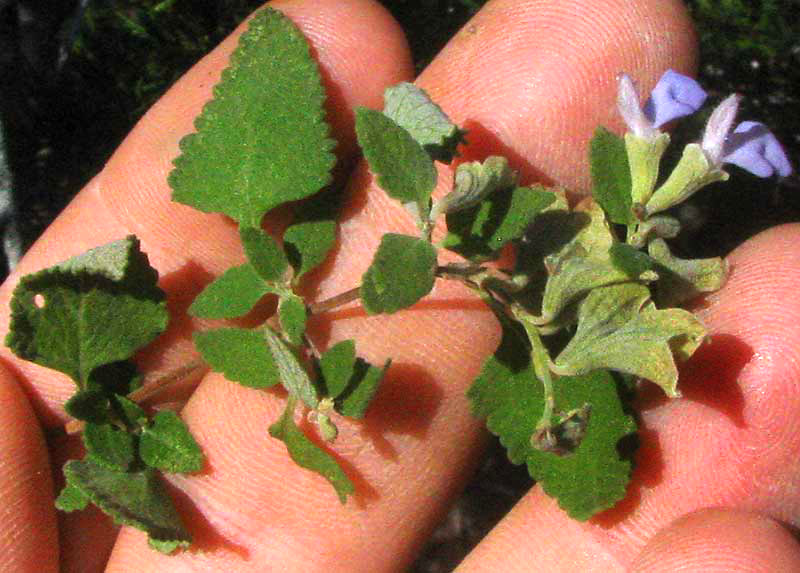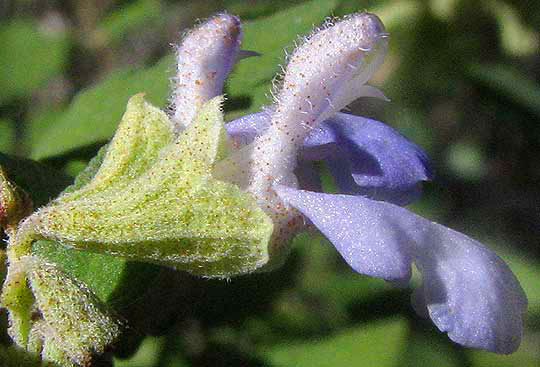Excerpts from Jim Conrad's
Naturalist Newsletter

from the November 11, 2012 Newsletter issued from the valley of the Dry Frio River in northern Uvalde County, southwestern Texas, on the southern border of the Edwards Plateau; elevation ~1750m (~5750 ft); N29.62°, W99.86°; USA
SHRUBBY BLUE SAGE
Last week we looked at the famous Scarlet Sage, a beautiful, conspicuous, and fairly common wildflower found in rocky places here, especially on the slopes of our forested limestone hills. This week we have another sage -- another member of the Mint-Family genus
Salvia -- but this one I've found only in thin, dry soil at or near the top of our limestone hills. Unlike the ground-hugging, herbaceous Scarlet Sage, this sage is a head-high, fairly woody, densely branched shrub. Its leaves are typical of the sages in terms of shape and spicy smell when crushed, but the leaves are especially small, and the flowers are tiny and inconspicuous compared to the Scarlet cousin. At first glance you don't want to believe this shrub is a sage. However, such variation is to be expected among the sages, for the sage genus, Salvia, is the largest genus in the Mint Family. It's estimated to embrace 700 to 1000 species.
That a flowering branch of our blue-flowered, hilltop sage at the top of this page.
One name for this shrub is Shrubby Blue Sage, though it seems that most often even English speakers use its Spanish name, which is Mejorana. It's SALVIA BALLOTIFLORA, distributed mostly in Mexico's arid northeastern states where limestone outcrops as the bedrock. It is especially common in limestone canyons. In the US it extends up through southern Texas to about here, the limestone outcroppings of the Edwards Plateau in southwestern Texas.
Structurally, Shrubby Blue Sage's flowers are definitely sage flowers -- bilateral symmetry with distinct upper and lower lips, stamens inserted on the corolla throat with only the lower pair producing pollen. A close-up of the half-inch-long (13mm) flowers is shown below:

Besides being invested with long, soft hairs and many glands, a distinguishing feature of the flowers is their oversize calyx -- the pale green, funnel-shaped item at the left in the above picture, from which the blue corolla emerges. You may have noticed in the first picture that after pollination, when the corolla has fallen off, the calices expand even much larger. I would guess that this is to facilitate wind dissemination of the tiny nutlets inside the calices.
As soon as you smell Shrubby Blue Sage's spicy leaves you can believe the written reports that formerly the leaves were used for flavoring meats and other foods, and that a reasonably acceptable tea might be made from the leaves. If you stand beside the bush you see small pollinators of various kinds coming and going.